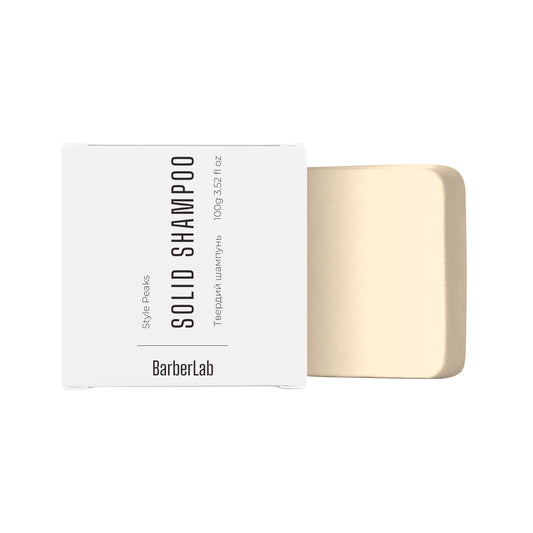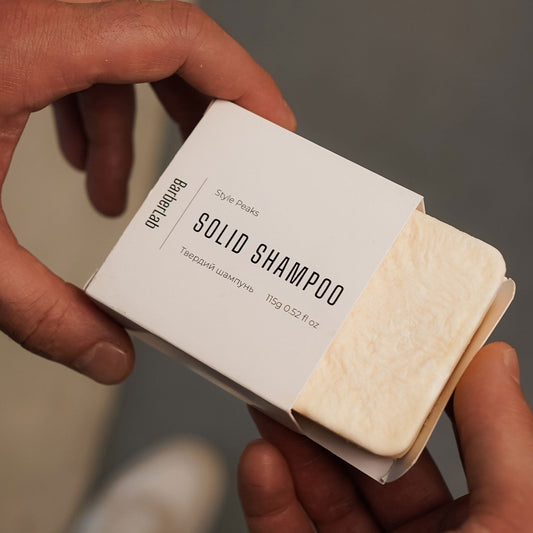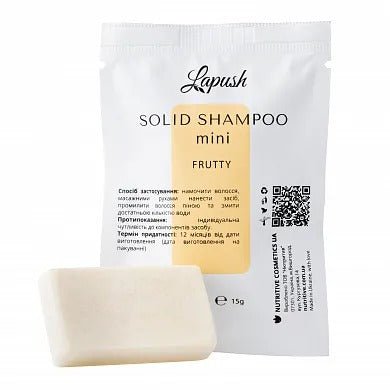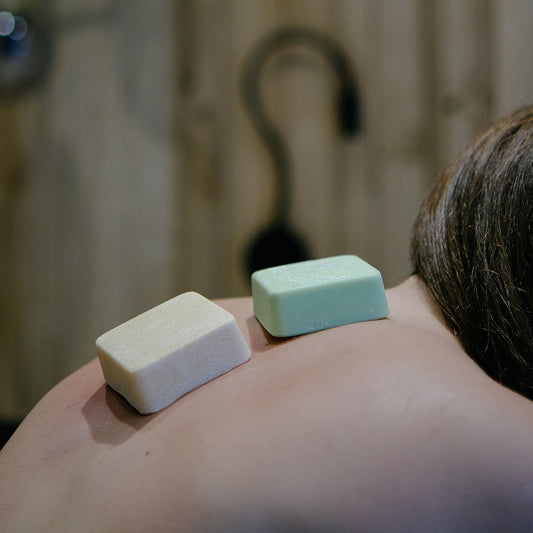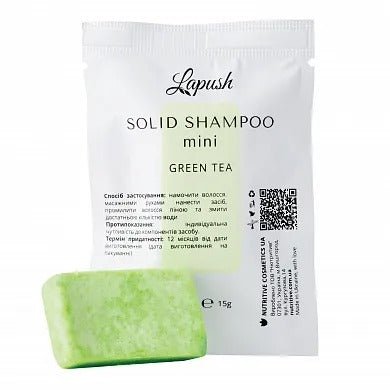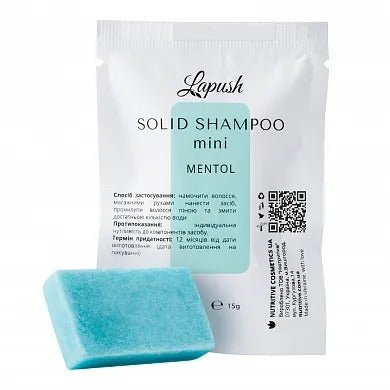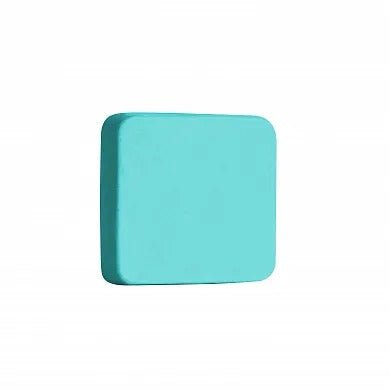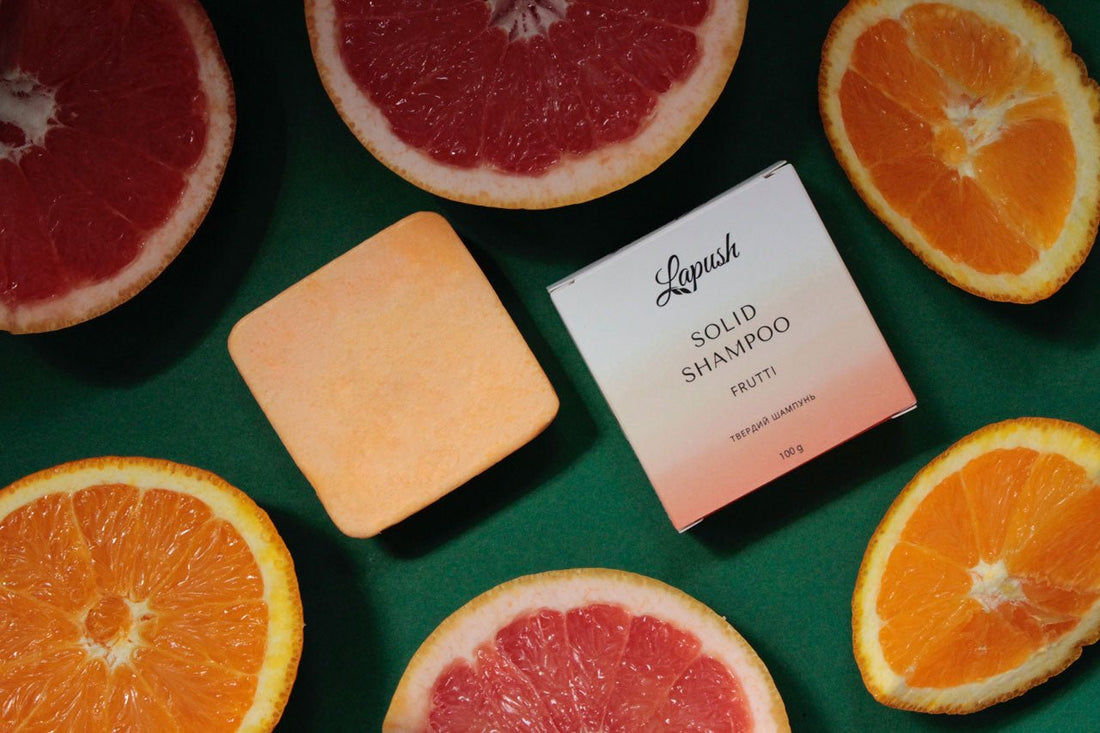
Solid shampoo: advantages, disadvantages and rules of use
In recent years, the beauty industry has been experiencing a real revolution in sustainability, and solid shampoo has become one of its brightest symbols. This compact product combines environmental care with effective hair care, attracting the attention of millions of users around the world. If you have been thinking about switching to zero waste or are simply looking for an alternative to your usual cosmetics, this material will help you understand all the nuances.
What is solid shampoo and why has it gained popularity?
Solid shampoo is a concentrated hair cleanser in the form of a bar that does not contain water in its composition. Unlike liquid counterparts, which are 70-80% water, the solid version is pure active ingredients compressed into a convenient form. This feature makes the product extremely economical and environmentally friendly.
The popularity of this format is due to several factors. Firstly, consumers are increasingly aware of environmental issues - plastic bottles from cosmetics make up a huge part of waste. Secondly, solid shampoo is ideal for traveling due to its compactness and the absence of restrictions on carrying in hand luggage. Thirdly, one bar replaces 2-3 bottles of regular shampoo, which saves not only money, but also space in the bathroom.

Solid shampoo: pros and cons of use
The benefits of solid shampoo go far beyond environmental friendliness. Let’s take a closer look at the main ones. First and foremost, it’s a financial benefit – while the initial price may seem higher, one bar lasts for 50-80 uses, making it much more economical than liquid versions. The concentrated formula means you’re paying for the active ingredients, not the water.
The environmental aspect is truly impressive: by giving up plastic packaging, you reduce your own carbon footprint. Most manufacturers package such shampoos in paper or cardboard boxes, which are easily recycled or compostable. In addition, the lower weight and volume reduce transportation costs, which also has a positive effect on the environment. For people with allergies or sensitive skin, it is important that many solid shampoos do not contain sulfates, parabens and synthetic dyes.
However, honesty requires acknowledging the shortcomings. The adaptation period can last 2-4 weeks - the hair gets used to the new formula, and at first it may seem stiffer or harder to wash. Storage requires special attention: the bar must dry completely between uses, otherwise it will soften and quickly wear out. Some users find it difficult to choose the right application technique, especially if the hair is very long or thick. It is also worth considering that in hard water, a hard shampoo can leave a coating, so sometimes rinsing with vinegar or lemon juice is necessary.
How to choose a solid shampoo based on your hair type
Choosing the right product is critical to your overall satisfaction. For oily hair, look for bars with clay (kaolin or bentonite) and essential oils like tea tree, rosemary, or peppermint, which help regulate oil glands. These formulas often contain citrus extracts to help keep hair fresh and clean.
Dry and damaged hair needs gentler formulas with oils (shea, coconut, argan), silk proteins or keratin to restore structure. Pay attention to products with panthenol and vitamin E - they moisturize and nourish. For curly hair, sulfate-free options enriched with glycerin and jojoba oil are ideal, which support the natural texture of curls.
Those with normal hair are the luckiest — balanced formulas with herbal extracts, light oils, and moderate concentrations of cleansing ingredients will suit them. If you have scalp problems (dandruff, irritation), choose medicinal options with zinc, tar, or antifungal ingredients. Always read the ingredients and, if possible, test samples before buying a full-size product.

Solid shampoo: how to use it correctly
The technique is different from the usual approach, but it's easy to master. There are two main application methods, and you can choose the one that works best for your hair type. Let's take a look at a step-by-step guide to effective cleansing.
Direct application method
- Wet your hair thoroughly with warm water - it should be well soaked with moisture.
- Wet the bar and run it through your hair from roots to ends in circular motions 5-10 times.
- Put the shampoo aside and massage your head, lathering up as you would with a regular liquid shampoo.
- Rinse the foam thoroughly with warm water, making sure no residue remains.
- Repeat the procedure if necessary - the first rinse removes basic dirt, the second thoroughly cleans
This method is ideal for short to medium length hair. It’s important not to overdo it with the number of strokes with the bar—too much friction can tangle your hair. Move smoothly and carefully, especially if you’re prone to knots.
Pre-foaming method
The second method is suitable for long, thick or very curly hair. Wet the bar, rub it between your palms until it forms a thick lather, and then apply this lather to the roots of your hair with massaging movements. This approach gives you more control over the amount of product and reduces the risk of tangling long hair. Distribute the lather with your fingers as if you were using liquid shampoo, paying special attention to the root zone, where the most sebum and dirt accumulate.
Regardless of the method you choose, the temperature of the water is very important. Too hot water opens the hair cuticles and stimulates the sebaceous glands to overwork, while cold water will not allow you to rinse the product well. The optimal temperature is pleasantly warm. Finish washing with a cool rinse - this closes the hair cuticle, giving it shine and smoothness.

Secrets of effective care with solid shampoo
The maximum result is achieved when the basic cleansing is properly supplemented with additional steps. Using a conditioner after a solid shampoo is not mandatory, but recommended, especially for long hair. There are solid conditioners that perfectly complement the shampoo bar, creating a complete eco-routine. Apply conditioner only to the lengths and ends, avoiding the roots.
For hard water, a final rinse with acidified water is useful - add a tablespoon of apple cider vinegar or the juice of half a lemon per liter of water. This simple procedure neutralizes mineral deposits that can make hair dull and stiff. The result will pleasantly surprise you: hair becomes soft, shiny and easier to comb. Some users do this rinse after every wash, others - once a week.
The frequency of washing is individual, but many people notice that with a solid shampoo, their hair stays clean longer. This is due to the absence of silicones, which create a deceptive feeling of cleanliness, but in fact attract dirt. At first, do not try to immediately increase the intervals - let the hair adapt naturally. After a few weeks, many people go from washing daily to once every 2-3 days without losing freshness.
Storage and care of solid shampoo
Proper storage will extend the life of the bar and preserve its properties. The key is to let it dry completely between uses. Water softens the product, and if it is constantly in a humid environment, it will quickly melt and lose its shape. Invest in a special soap dish with drainage holes or a grid that allows water to drain.
Storage options:
- A raised soap dish is the most popular option, where the bar rests on a grate above the bottom, allowing water to drain freely.
- Hanging bag - mesh or linen, allows shampoo to air dry and creates extra foam when used
- Magnetic holder is a modern solution where a metal plate is inserted into the bar and it "hangs" on a magnet on the wall.
- Travel box - special containers with ventilation for transportation
Storage temperature also matters. Avoid direct sunlight and excessive heat—they can alter the texture and reduce the effectiveness of the active ingredients. A cool, well-ventilated area of your bathroom is ideal. If you have a very humid bathroom, consider storing your shampoo outside between uses.

The shelf life of solid shampoo is usually 12-24 months, but it is best to use an opened bar within 6-8 months for maximum effectiveness. Natural formulas without preservatives have a shorter shelf life. If you notice a change in smell, color or texture, it is time to replenish your stock.
Adaptation period: what to expect
Switching to a solid shampoo is rarely perfect, and that's perfectly normal. Your hair and scalp need time to adjust to the new formula, especially if you've been using products with silicones and sulfates for years. The first 2-4 weeks are called the "detox period" - your hair is rid of the accumulated synthetic residue.
At this time, various reactions are possible. Hair may feel heavy, greasy at the roots or, conversely, too dry and unruly. Some experience a slight itching of the scalp - this is a sign that it is being cleansed of the silicone film. Do not give up at this stage! Most of the negative reviews about solid shampoos are related to the fact that people did not give their hair a chance to adapt.
There are a few tricks to help make the transition easier. Use a deep-cleansing shampoo once before switching to remove as much buildup as possible. Massage your scalp while washing—this stimulates blood circulation and helps your sebaceous glands adjust to the new regimen. Don't forget to rinse with acidified water—it significantly alleviates the symptoms of adaptation. And most importantly, give yourself at least a month before drawing any final conclusions. After adapting, most users report improved hair condition, reduced hair loss, and increased volume.
Economic benefit and environmental impact
The financial aspect of using solid shampoo is often underestimated. One bar weighing 60-100 grams replaces 2-3 standard bottles of liquid shampoo with a volume of 250 ml each. With an average price of 150-300 hryvnias per bar and a usage period of 2-4 months, it turns out 50-75 hryvnias per month. Compare this with the cost of liquid shampoo in the middle price segment - 100-150 hryvnias per month, and the difference becomes obvious.
The environmental benefits are even more impressive. Over 8 million tons of plastic enter the world's oceans every year, and the cosmetics industry is a major contributor. By using a solid shampoo, one person avoids throwing away 4-6 plastic bottles per year. Multiply that by millions of potential users, and the impact becomes global. Minimal packaging, a reduced carbon footprint during transportation due to less weight and volume - all this makes solid shampoo a true eco-hero.
Interesting fact: the production of one bar of solid shampoo uses 30% less water than its liquid counterpart. On a global scale, where water resources are becoming increasingly scarce, this is extremely important. In addition, many manufacturers of solid shampoos adhere to the principles of ethical production: they do not test on animals, use organic ingredients and support fair trade.
Common mistakes and how to avoid them
Even with detailed instructions, people often make common mistakes that reduce the effectiveness of the product. Let's look at the most common ones and how to fix them. The first mistake is not wetting the hair enough before applying. If the hair is not completely soaked with water, the shampoo will not foam properly and will not be distributed well. Spend at least 30-60 seconds thoroughly wetting the entire head.
The second problem is excessive rubbing of the bar on the hair. Some users think that the more rubbing, the better. In fact, this leads to tangled hair and mechanical damage. 5-7 smooth strokes on each area of the head are enough. If there is not enough foam, it is better to additionally moisten the hair than to rub the bar again. The third mistake is related to rinsing - many people do not spend enough time on this. The remains of solid shampoo can make the hair sticky and dull, so rinsing should last at least 2-3 minutes.
Storing in a wet soap dish without drainage is a classic beginner's mistake. The bar turns into a slippery mass and quickly disappears. Always use a soap dish with holes or place a sponge under the bar, which you regularly wring out. And the last thing is to abandon the product too quickly. If the result is not impressive after the first use, do not throw away the bar. Try changing the application technique, water temperature, add a vinegar rinse. Give yourself and your hair time to adapt - patience will pay off a hundredfold.
Solid shampoo for the whole family
The versatility of solid shampoo allows it to be used by all family members, which further saves budget and space. Children over three years old can safely use mild formulas without aggressive components. Choose options with a moderate aroma or no aroma at all, since children's skin is more sensitive. Bars with natural extracts of chamomile, calendula or oats are ideal for the younger generation.
Teens with problematic scalps may benefit from formulas with tea tree or eucalyptus to help control excess oil. Men often like the ease of use of a solid shampoo—one 2-in-1 product can combine cleansing of the hair and scalp with a light conditioning effect. Older adults should choose moisturizing formulas with oils, as scalps tend to become drier with age.
If your family has different hair types, you can either have several specialized bars (each stored separately) or choose a universal formula for normal hair. Many families report that switching to solid shampoos makes it easier to organize their bathroom and reduce clutter on the shelves. Teaching children how to use and store their products properly is not only a practical skill, but also a lesson in responsible consumption.
Conclusions: Should you switch to solid shampoo?
Having analyzed all aspects of using solid shampoo, we can confidently say: this is really an option worth trying. The combination of economy, environmental friendliness and efficiency makes this product attractive to a wide audience. Solid shampoo demonstrates advantages in many areas - from reducing plastic waste to long-term use of one bar instead of several bottles.
The key to success is choosing the right formula for your hair type, mastering the technique of use, and being patient during the adaptation period. Now you know how to use solid shampoo correctly, which means you can avoid typical beginner mistakes. If you approach it consciously, taking into account all the pros and cons of solid shampoo, this product can become your favorite hair care assistant and an important step towards a more environmentally friendly lifestyle.

